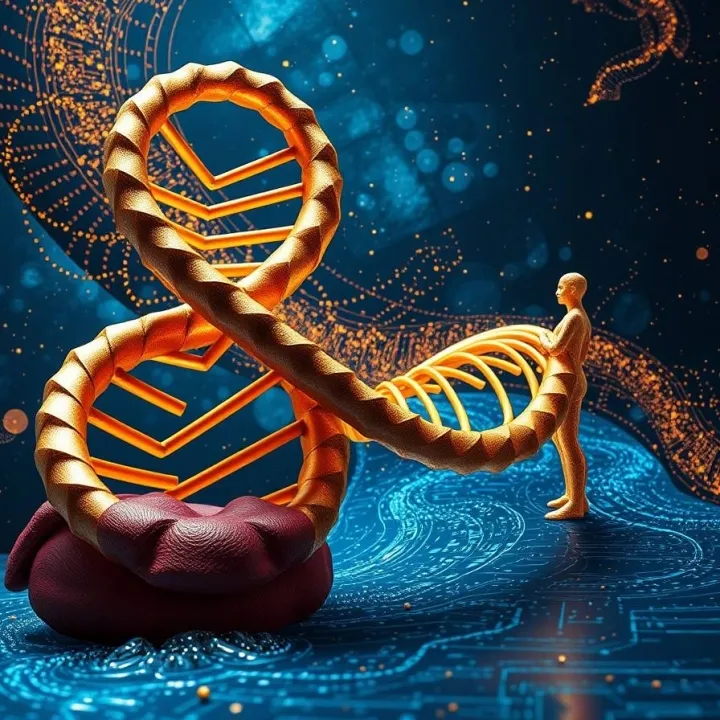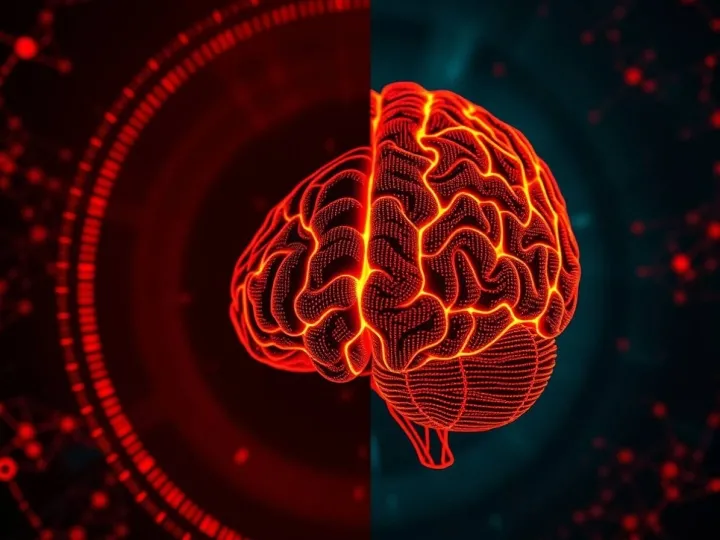From Data to Intelligence: A New Genomic Era
Modern biology stands where language once stood before the rise of large language models. The human genome - a 3-billion-letter text written in A, T, C, and G - holds rules and patterns that determine health, behavior, and evolution. Until now, most "genomic AI" models were trained on mixed species, limiting their sensitivity to human variation.
Genos changes that. Created by the Hangzhou AI Genomics team, it was trained solely on human data - over 636 high-quality genomes from the Human Pangenome Reference Consortium and the Human Genome Structural Variation Consortium, representing a diverse global population. By focusing on humanity itself, Genos learns the nuances that make one person's DNA unique yet universal - the subtle grammar of genes, mutations, and regulatory networks that shape our lives.
Architecture of a Living Language Model
At the heart of Genos lies a Mixture of Experts (MoE) design - a concept borrowed from AI models like Switch Transformer and Gemini - adapted for biology. Each "expert" in the model specializes in a different aspect of genomic logic: some decode repetitive regions, others parse complex non-coding sequences that regulate gene expression. For each segment of DNA, the router dynamically activates two out of eight experts, balancing precision and computational efficiency.
Genos integrates:
- Rotary Position Embedding (RoPE) to interpret sequences up to 1 million base pairs long.
- Grouped-Query Attention (GQA) and Flash Attention for high-speed computation.
- SwiGLU activations for expressive stability across its 12 layers.
- Five-dimensional parallelism - tensor, pipeline, data, expert, and context - to handle trillion-token datasets efficiently.
In short, it's a hybrid of neuroscience and engineering: a system that "thinks" in DNA.
Performance Beyond Biology
Benchmark tests across standard datasets - from Genomics Benchmark (GB) to Long-Range Benchmark (LRB) - show Genos outperforming all competitors, including Evo2-40B, HyenaDNA-1M, and Nucleotide Transformer 2.5B. On complex human enhancer detection, variant-effect prediction, and long-sequence modeling, Genos consistently achieved AUC scores above 0.9, even when handling inputs of 128K - 1M bases. Unlike earlier models limited to short-range contexts, Genos maintains accuracy as context length increases - meaning it actually gets better when the genome gets longer.
From Prediction to Understanding
The real breakthrough is what Genos can do with that understanding. In fine-tuned experiments, the model learned to predict RNA-seq expression patterns - essentially recreating how genes "speak" inside cells. When tested on real cell types such as B lymphoblastoid (GM12878) and natural killer cells, Genos achieved >0.93 correlation between predicted and actual RNA expression, capturing not just numbers but strand-specific and tissue-specific behavior.
Even more impressively, when combined with large text models (like Qwen3 and 021 Foundation Model), Genos can reason across biology and language simultaneously. In KEGG-based tests, the Genos-10B + Qwen3-4B combination reached over 98% accuracy in predicting disease outcomes from genetic variants - a true multimodal "genome-language" system.
Human-centric Biology
Genos is not just an engineering feat. It marks the beginning of human-centric biology, where artificial intelligence becomes an interpreter of life's code rather than an outsider observer. Because it is trained on population-diverse genomes, it can recognize subtle genetic variations across ethnicities, improving fairness and diagnostic precision in global health. It enables:
- Faster and more accurate disease-gene association studies.
- Personalized treatment prediction in oncology and pharmacogenomics.
- Population-level screening and early prevention through genomic trends.
- Simulation of how mutations ripple through cellular systems - the "what-if" engine of biology.
And with open weights released on GitHub, Hugging Face, and BGI DCS Cloud, any research lab - even without supercomputers - can deploy or fine-tune Genos for specific diseases.
From Genome to Conscious Code
For Seven Reflections, the deeper resonance lies in the metaphor: Genos shows that even biology follows structural intelligence. Our DNA is not chaos but syntax - recursive, predictive, modular. Just as large language models extract meaning from grammar, foundation models like Genos uncover the language through which life writes itself. This convergence of computation and biology blurs the line between organism and algorithm - revealing that cognition and evolution are two sides of the same code.





